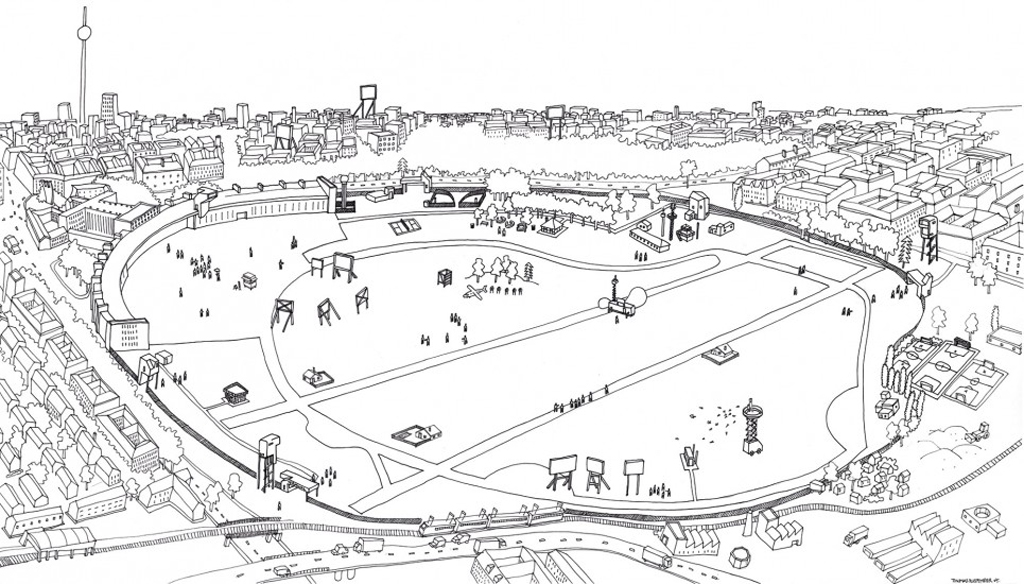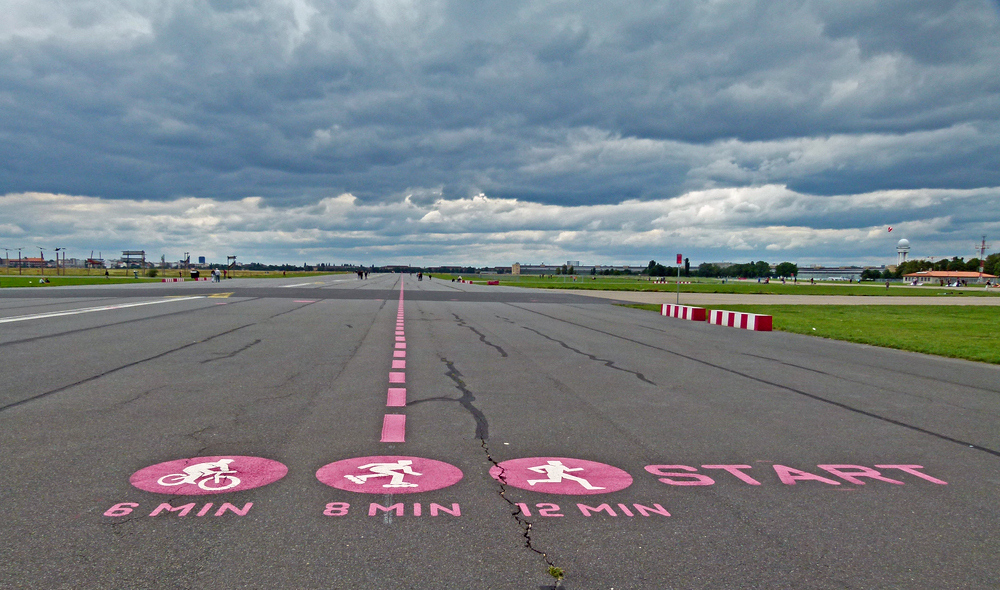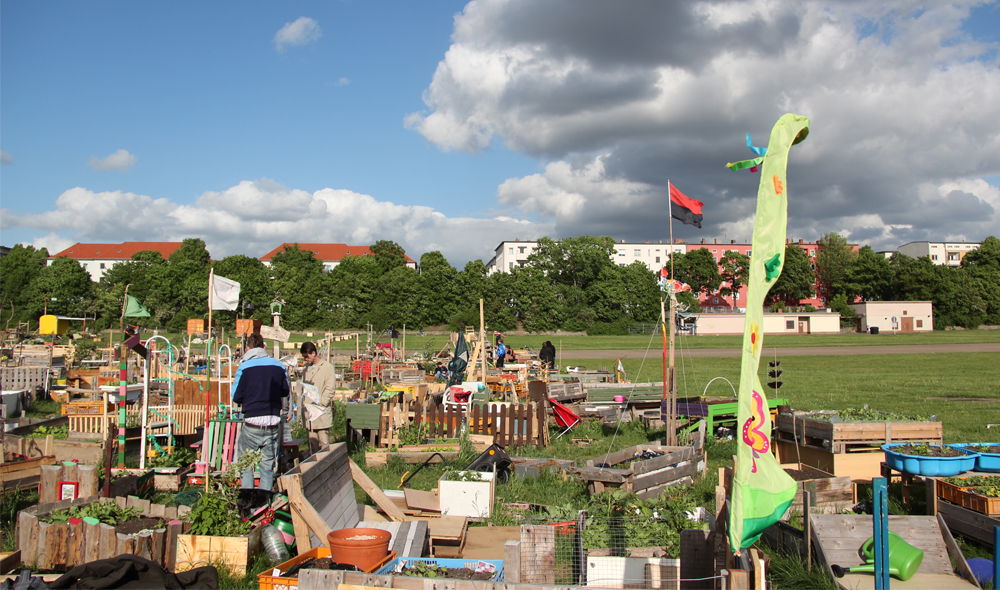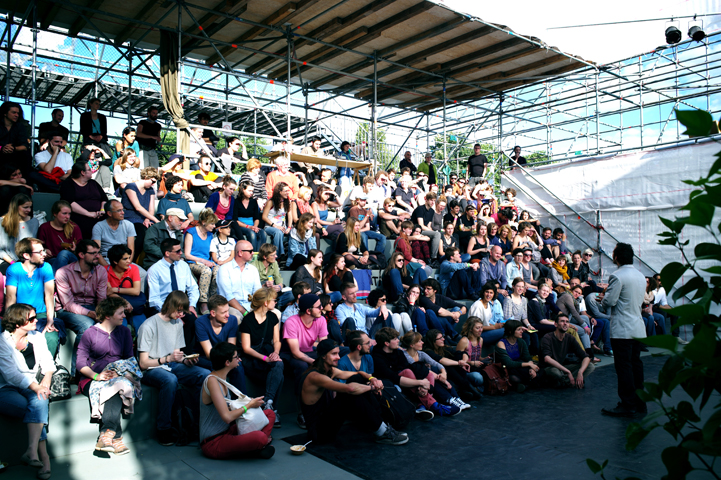

Tempelhof Park Regeneration
Tempelhof Park opened for public use in 2010 and has since been the topic of many discussions on how long term urban plans can be developed from step-by-step strategies which involve local engagement at all stages. Tempelhof airport was built in 1936-1941 and used by the Nazis during World War II and later the ‘city airport’ of Berlin. Located just South of the central district in Berlin, the site was closed for use in 2008 and as a result left a 380 acre airfield for public use.
Raumlabor (1999) are a group of architects who pioneered new design strategies in their home town of Berlin, Germany as a result of the rapid and unrestricted development of the city after the fall of the Berlin wall. They have played a vital role in the transformation of Tempelhof Park from a closed-off obstruction in the city, to an open playing field for local use. In partnership with Urban Catalyst Studio they developed an urban plan concept which explores:
‘New links between top-down and bottom-up processes.
Strategies for opening and cultural exploration of the area.
The activation of designated areas on Pioneer uses and first measures of park development are interlinked in a dynamic master plan with a long-term urban developments.’ Urban Catalyst Studio
The reactivation plan of the vast park (equal to the size of New York’s Central Park) has been developing since before the closure of the airport and is concentrated on giving locals an active role in the development.
A number of “testing situations” for long term ideas have been implemented in order to organically determine the use of the park. Many of these pioneering projects have been concentrated on sport/cultural activities which enhance the public use of the park and surrounding area to create vital links with the neighbouring community. There is an open application for projects in the field to test ideas which can be found here
Some of these projects include ‘Allmende-Kontor‘ (Office for community spaces) which is a large urban gardening programme offering affordable plots for local gardeners. The park is also used for a number of sporting activities including kite and wind skateboarding, utilising the extensive leftover paved surfaces.
An example of Raumlabor’s role in the continuing transformation of the site is Junipark festival (2014), located on a former cemetery next to Tempelhofer Park in Neukölln. The festival was used as a landmark/meeting point for youngsters to discuss problems about affordable housing and organise a space for discussions, workshops, performances and projects. Later the results are proposed to local politicians. The frame of scaffolding elements structure gives visitors a unique view of the park and is easily transformable.
In 2014, residents of Berlin voted in favor of a referendum rejecting the construction of housing and commercial properties on the site. The work of Raumlabor and Urban Catalysts studio has driven the community involvement in the regeneration process and will hopefully continue to develop as a public park planned by locals.
 ‘User Based Activation by minimal interventions:’ Urban Catalyst
‘User Based Activation by minimal interventions:’ Urban Catalyst
Phase 1 : The field is Closed Phase 2 : Controlled Opening Phase 3 : Some areas used as first Pioneers Phase 4: Opening of whole area.
‘Allmende Kontor’ image from seedsofthecity
‘The Junipark’ 2014 – Image: Raumlabor
‘The Junipark’ 2014 – Image: Raumlabor



